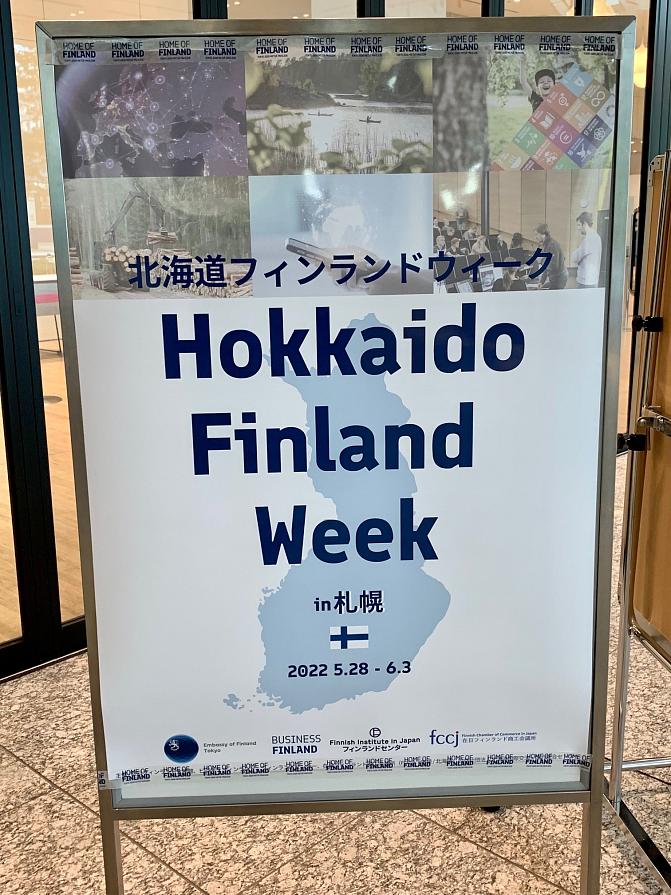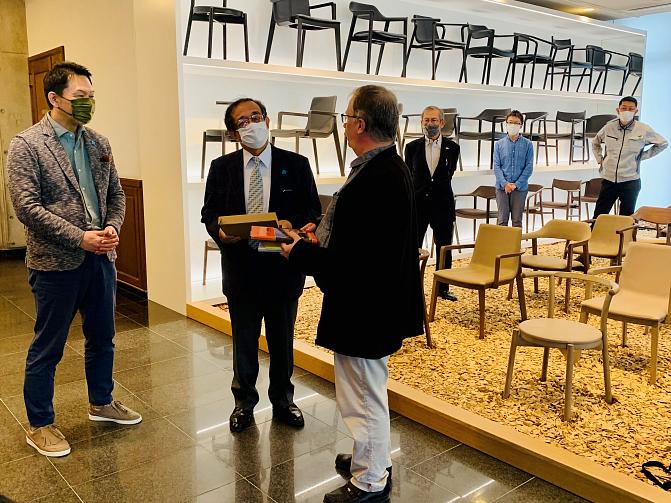Luke's Biocircular Economy research looks to the east - new opportunities and cooperation for bio-based know-how and innovations are being built in Japan
Japanese translation can be found at the end of the page.
The goals and challenges of Finland and Japan are similar in many respects. Both countries are looking for ways towards carbon neutrality, security of supply, self-sufficiency, and food security. Both countries are thinking about goal-oriented multi-use of forest resources and how to produce new long-lasting and value-adding product solutions. In addition, we share the challenges of an aging society: how to balance the care of an aging population, the necessary workforce, and the needs of urban and rural development.

Cooperation between the countries already has a history of more than 100 years. But what are the core issues related to the sustainable use of renewable natural resources, regarding how Finland and Japan could further intensify bilateral research, development and innovation cooperation and strengthen the networks that are now being built? These topics are being discussed in a networking project that organized its first trip to Japan in early summer 2022.
We identified several cooperation themes in Hokkaido and Nagano prefectures that were interesting to Luke
Our journey started on the northern island of Hokkaido, where we participated in the Hokkaido Week – Forest Day seminar organized by the Finnish Embassy in Japan and our project. We presented common RDI interests together with Japanese professors, complementing each other: sustainable wood use, industrial wood construction and wood architecture, as well as new value-added products and functional foods obtained from forest biomass and side-streams. We are now starting a state-of-art survey on the topics to refine the research topics and find funding channels.

In Hokkaido, we met numerous RDI operators and company representatives in the forestry, wood and construction industry and got to see local wood harvesting and local wooden construction sites in practice. We heard about challenges, such as the difficulties of harvesting in mountain conditions and the effects of forest ownership models on the availability of wood. Privately owned forest plots are smaller in area than similar ones typically are in Finland, and private forest owners want to pass them on to the next generations as they are, forested. How to find a balance - which model can be used to harvest wood and maintain the forest cover at the same time? Would this be a shared research topic for natural scientists and social scientists to study together - in Finland and Japan? There are a lot of differences between the countries, partly due to cultural reasons - it takes a long journey of working together to find solutions to challenges that also respect the cultural peculiarities.
As in Finland, there is a reason to be concerned about the increasing likelihood of forest damages and the effects of extreme weather such as floods and landslides in the regions. Strong storms, excessive rains and volcanic natural disasters also affect house and infrastructure construction and bring both advantages and challenges to wood construction. Yet another common theme – one with far-reaching implications. How do we adapt to the changing conditions and how the climate change can be mitigated?
We got to know forest daycare activities and found that there is a solid connection between the preservation of biodiversity and forest nature and people's wellbeing also in Japan. Similarly, in the research area of inhabited environment and urban construction, the same challenges and points of interest were encountered between the countries - how to build, furnish and decorate sustainably by using wood, considering the residents' comfort and well-being? Are there climate-resistant solutions that can utilize the properties of different materials, maximize the use of natural light and solar energy, or otherwise improve the sustainability of energy solutions? How to ensure the strength and long-term durability of structural elements, fire resistance, acoustics and health-promotion in residential buildings, business and office premises, schools and kindergartens, welfare service centers and even hospitals by using different materials and techniques?
Smart value-added forest bioeconomy and high-end products
In Asahikawa, the delicate design of the local furniture factory's production touched the heart of the inner aesthetician - and it was especially great to see how the region had actively moved to the sustainable use of local wood in products with high added value. There are also innovations in Finland, such as the use of by-products of the wood products industry, for example in the manufacture of bathroom furniture, or the bending of wood and components into the furniture and structures of living spaces and offices - that we would like to have as transferred to the Japanese market as well.
In Nagano Prefecture, we had inspiring discussions, for example, at a university specialized in textile research: a common topic could be related to bio-dyes and functional coatings. Different parts of forest biomass can also be used to develop innovative value-added products: fragrant compounds, antimicrobial solutions, or fractions suitable for food. The planning of a joint pilot study between Luke and Nagano and the researchers and companies of the Ina region is underway.

The challenges of health and aging population unite us
At the Hokkaido Information University (HIU) in the city of Ebetsu, we got to know the Ebetsu model, which is unique on a world scale: the effects of diet on people's health are being studied with the help of thousands of volunteers. For Luke's research into functional food solutions, HIU would be a very valuable partner, along with some Finnish partners. The intention is to organize a series of webinars with HIU during this autumn, where cooperation themes can be built aiming at suitable funding applications.
Innovation ecosystem cooperation with the Japanese Ministry of Agriculture, Forestry and Fisheries starts
In Tokyo, we met representatives of the RDI sector of the Japanese Ministry of Forestry, Agriculture and Fisheries and discussed how Luke could join the RDI business ecosystem Field for Knowledge Innovation Integration (FKII). The Japanese Ministry has opened its own FKII center at the beginning of the year also for foreign operators. With the help of Business Finland, Luke was accepted there as the first Finnish operator. We already practiced this cooperation last year, and the network proved to be a good way to connect research partners, for example to find partners in project applications. Luke's team of international issues is organizing a webinar together with the Circular research program at the end of the year to highlight our expertise and cooperation opportunities in FKII's seminars.
About the project
Luke's researchers participated in a networking trip to Japan in May-June 2022 as part of the 2020-2023 project - Development of forest bioeconomy cooperation between North Karelia and Japan's Nagano- when the COVID-19 pandemic finally made business travelling to the country possible. Luke's goal in the project is to continue - in cooperation with Karelia University of Applied Sciences, University of Eastern Finland and other project actors - to build research cooperation and networks, develop joint research projects and expert exchange, generate innovations and support commercialization.
At the same time, we are also supporting the international growth in Finland as a whole, and especially the growth of our regional networks, in terms of actor alliances/clusters emerging from the regions and the circular bioeconomy themes that are important to Luke. In Japan, our target partners are universities, research institutes and companies in the cooperation regions of the project, and in the future also other regions.







